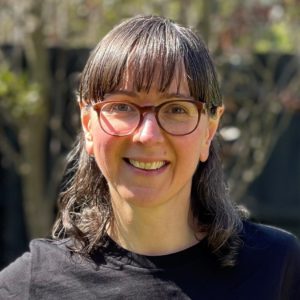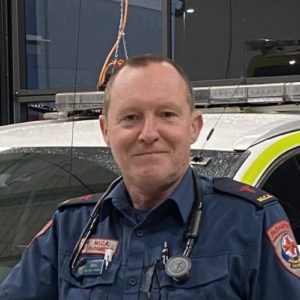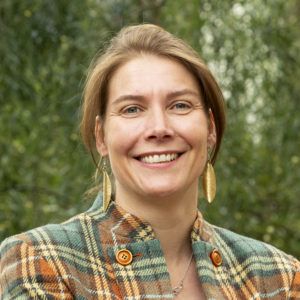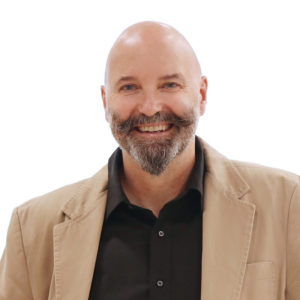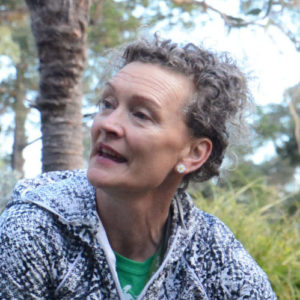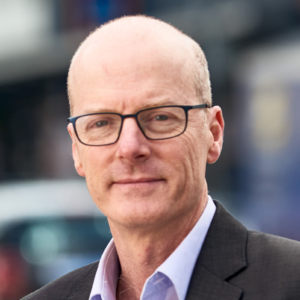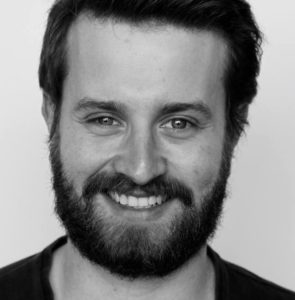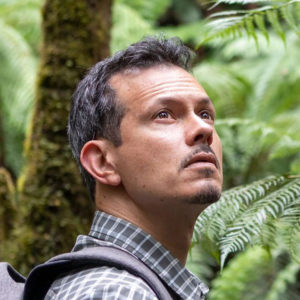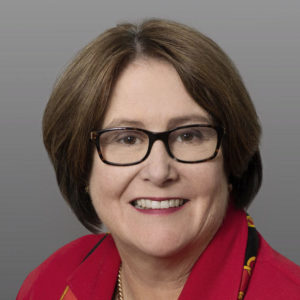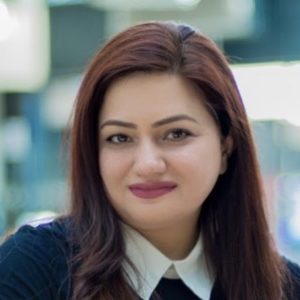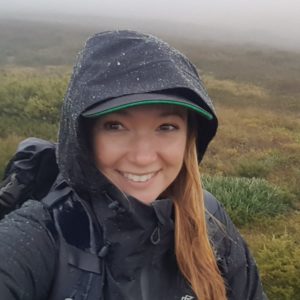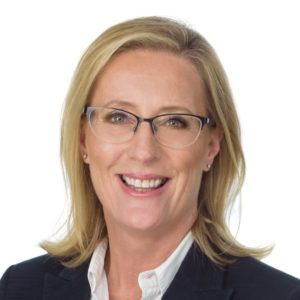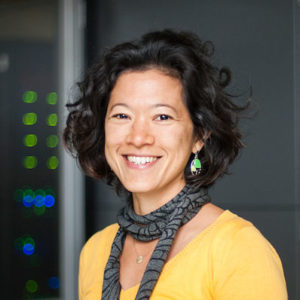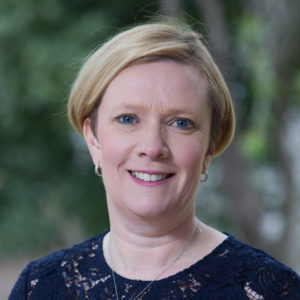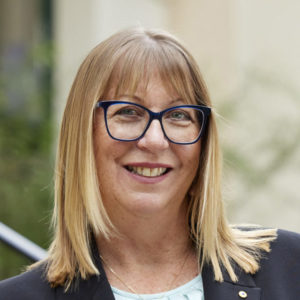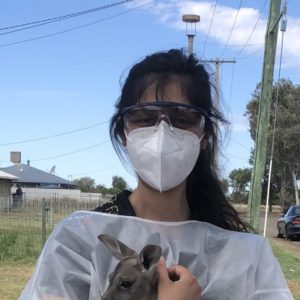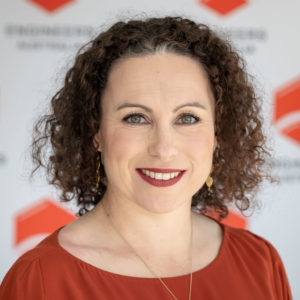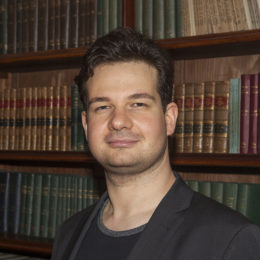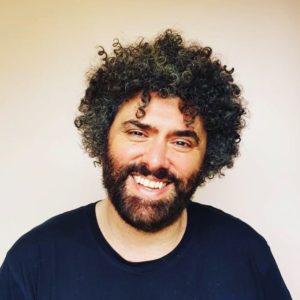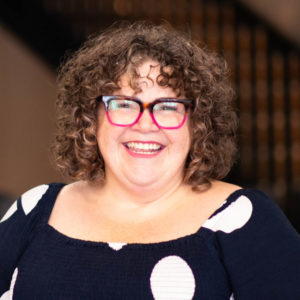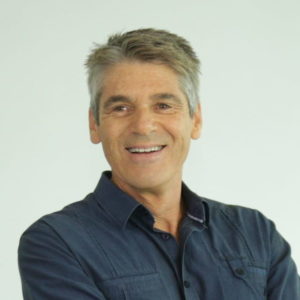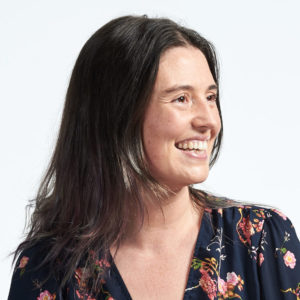The Many Different Pathways of STEMM
This piece appears in the July 2023 edition of Science Victoria magazine. All issues can be read online for free at rsv.org.au/Science-Victoria.
Embarking on a career in STEMM often involves dealing with uncertainties when it comes to progressing from education and training to professional employment and expertise.
Even with training in one subject – whether it be astrophysics, IT, civil engineering, statistics, nursing or something else – you are not limited to working in only that area for your entire career, nor limited from further studying in other areas that complement your skillset.
- What is your current role title, and what do you do in this role?
- What are your qualifications and what was your experience of STEMM education and training?
- Did you have a firm idea about what you wanted to do next?
- How did you find your way to your current job, and is your training still relevant?
- What advice would you give to an undergraduate student considering a career in STEMM fields?
Dr Dee Ninis
1. What is your current role title, and what do you do in this role?
I am an Earthquake Scientist at the Seismology Research Centre (SRC). I am responsible for assessing fault structures, particularly determining whether they are active or show evidence of geologically recent ground-rupturing earthquakes. This information is incorporated in seismic hazard studies to estimate the expected intensity and frequency of earthquake-related ground-shaking at a given site over a given time period.
2. What are your qualifications and what was your experience of STEMM education and training?
I undertook a BSc (Hons) in geology/geophysics because of my interest in earthquakes. Unfortunately, I did not learn very much about earthquakes here in Melbourne. There is a general perception that, because of its location within a tectonic plate, Australia does not experience earthquakes. However, it does – in fact, in the last ~70 years, there has been an earthquake >M6.0 every ~10 years. Nonetheless, I was unable to find a suitable earthquake geology postgraduate project here in Australia, so I relocated to New Zealand to undertake my PhD.
3. Did you have a firm idea about what you wanted to do next?
I’ve been fascinated by earthquakes and have wanted to study them for as long as I can remember. But, due partly to the lack of earthquake-related research and job opportunities in Melbourne, my career path was not straightforward. When I finished my undergraduate degree, I contacted the only organisation I knew of who worked with earthquakes, but I never heard back. While considering my options, I was offered a short-term job with the State Government’s Minerals & Petroleum Division. My position became ongoing – in total, I was there for almost 6 years.
4. How did you find your way to your current job, and is your training still relevant?
After ~6 years of loosely applying my geological knowledge in the workforce, I considered going back to university to obtain a PhD in earthquake science. I applied for a position at the Seismology Research Centre (SRC) and – even though I’d missed the deadline, it so happened that none of the original applicants for the position were suitable and I was offered an interview. It was hard to curb my enthusiasm for earthquakes, which obviously worked in my favour, as I was offered the position about an hour later. At the SRC, I trained as a seismologist and earthquake hazard analyst. I loved working there, but I still wanted to formalise my qualification, so I left to complete a PhD. It was always my hope to return to the SRC, and I’m happy to, again, be working for them – this time with a PhD under my belt.
5. What advice would you give to an undergraduate student considering a career in STEMM fields?
We spend a lot of our waking hours at work, so I think it’s important that work makes us happy. I consider myself lucky to be working on something that fascinates me. So, my advice is to first determine what it is that you enjoy most. Speak to those who work in that field – social media is great for seeing what other experts around the world are working on, too. Attend seminars and, if possible, conferences. And remember that academia is not the only option!
Dr Gavin Smith
1. What is your current role title, and what do you do in this role?
I am a frontline paramedic for Ambulance Victoria. I also hold adjunct positions as Associate Professor (Paramedicine) in Griffith University’s School of Medicine, and as Senior Research Fellow at Monash University in Translational Medicine and Public Health.
My role is the provision of emergency health care to the community of Victoria. This involves maintaining a high level of clinical skills, engaging in research trials of new therapies, and ensuring health systems function for the benefit of the patient.
2. What are your qualifications and what was your experience of STEMM education and training?
Originally, my employment required a TAFE-issued Associate Diploma, but I engaged in the Bachelor of Paramedic Studies when it became available. I followed with a Grad Cert in Emergency Health, Master of Emergency Health, and culminated my studies with a PhD (one of only a handful in Australia at the time).
As a mature-age student engaging in tertiary education for the first time, I looked forward to both the theoretical and practical aspects of learning, and sought every opportunity to experience life as a student. As I was older with significant encumbrances (a family, mortgage, etc.), I knew I could not live from grant to grant in research, but rather I could enjoy the learning experience and use it to create opportunity within my own field.
3. Did you have a firm idea about what you wanted to do next?
While I had no specific plan for my degrees, I knew that the field was a blank page and there were opportunities to evolve it. I gravitated toward education, as this was evolving rapidly and required senior experienced paramedics with academic qualifications who could provide practical application and research understanding. This enabled me to develop local and international networks that expanded my understanding of potential future directions and what specific obstacles may lie ahead. While still engaging in mentoring, publication, supervision, and examination, I have returned to clinical operations as I feel very comfortable in this space, witnessing and contributing to the effect of systems and therapies in real time and having a direct influence into positive patient outcomes.
4. How did you find your way to your current job, and is your training still relevant?
As both a frontline clinician and an academic, my current roles are surprisingly compatible in providing fertile ground for translational work to evolve the field. The health field is challenged more now than ever, and in this post-pandemic world where money is short and resource demand high, service providers are scrambling to find efficiencies in care delivery. My education, knowledge, and experience are still valued globally, and I am fortunate enough to find myself employable in challenging times.
5. What advice would you give to an undergraduate student considering a career in STEMM fields?
Be positive about your time spent learning, consider how your research will benefit society, be pragmatic enough to understand your limitations (we all have them), and be reassured that you will create change in the world as a result.
Dr Djuke Veldhuis
1. What is your current role title, and what do you do in this role?
I’m course director for the Bachelor of Advanced Science – Global Challenges at the Faculty of Science at Monash University, a program that sits at the intersection of ‘science and society’. I am ultimately responsible for the degree across all four years including teaching, leading overall program development and vision, managing budget, and managing more than 30 industry, government and charitable partnerships each year. In what spare time I find, I collaborate with colleagues on research in the science education space.
2. What are your qualifications and what was your experience of STEMM education and training?
Despite working in a Faculty of Science, I hold a Bachelor of Arts in Archaeology and Anthropology and a PhD in Biological Anthropology (which deals with the evolution of humans, their variability, and adaptations to environmental stresses) from the University of Cambridge. Although operating broadly under the humanities and social sciences, it is worth noting that these degrees are incredibly interdisciplinary by nature and the combination of scientific method with a deep understanding of human behaviour, culture and history, serves me very well in my current role. I also obtained a Masters in Science Journalism from City, University of London, because I am passionate about science communication and public engagement with science, particularly tackling scientific misinformation.
3. Did you have a firm idea about what you wanted to do next?
Not specifically, and I’m comfortable with that. What I DO know is that I thrive working in ‘grey’ areas – complex, interdisciplinary problems that often have a combination of human (behavioural) considerations as well as science and governance. I value roles that challenge multiple aspects of my interdisciplinary skills and allow me to engage with a diverse range of people and sectors.
4. How did you find your way to your current job, and is your training still relevant?
Although not STEMM trained specifically, the transferable skills, such as problem-solving and understanding human behaviour, that were nurtured during my training are more relevant than ever. My pathway has equally been shaped by experience outside of academia. During my PhD, I became passionate about science communication and public engagement in science. That led me to jobs in academic, charitable and corporate organisations all in roles that sat at the intersection of science, society and education, all of which underpin the skills I use in my current role.
5. What advice would you give to an undergraduate student considering a career in STEMM fields?
Explore! The role and the degree I now coordinate did not exist when I was studying, indeed, one of my supervisors commented that: “We didn’t think that someone with your skill set combination existed”. But that is the point: the world is changing at an incredible rate, the jobs that exist today may or may not be around tomorrow, but in their place, there will be others. Technical knowledge (e.g. how DNA is sequenced) may be outdated within a handful of years of you graduating, however, transferable skills like an ability to reason through problems or a capacity to communicate complex information clearly and concisely, will always be required. So, study what you enjoy and the rest will come.
Dr Aeron Hurt
1. What is your current role title, and what do you do in this role?
I am a Principal Global Medical Director for Infectious Diseases, and I work at the pharmaceutical company Roche. I work in Medical Affairs, which means for the drugs that we develop, I am part of the external-facing part of the company that liaises and communicates the scientific and clinical information to the medical community. Aside from the core medical affairs activities, I also get involved in the development of new drugs, the design and conduct of clinical trials and liaising with Governments about pandemic preparedness.
2. What are your qualifications and what was your experience of STEMM education and training?
I have a BSc(Hons) in aquatic science/marine biology and a PhD in influenza virology. Two STEMM specialties that are not well connected! During my undergraduate in aquatic science, I became very interested in molecular biology, getting involved in the population genetics of fish. Based on my molecular biology lab skills I got a job genetically analysing influenza viruses for a WHO influenza surveillance laboratory, and during my time in that surveillance laboratory I enrolled and completed a part-time PhD in influenza antivirals. So not a typical straightforward academic path!
3. Did you have a firm idea about what you wanted to do next?
No, there was no grand plan I followed. Instead, I kept my eyes open to new opportunities/pathways that seemed interesting and exciting and embraced them when they arose. Sometimes it can be tricky to know what opportunities exist outside of one’s area of daily work, so I believe that it’s important to use your network to learn more about what other people do.
4. How did you find your way to your current job, and is your training still relevant?
My 20+ years of research in respiratory viruses and antivirals led me to make a number of connections with industry, and it was through this that I was able to join one of the companies that I had previously collaborated with. My prior training and experience remain very relevant to my current role, but at the same time I have also experienced a huge learning curve in developing many new skills that are needed. Although making these career jumps is scary, it is also hugely rewarding and enriching to gain new experiences and tackle different challenges.
5. What advice would you give to an undergraduate student considering a career in STEMM fields?
STEMM career pathways are rarely predictable and linear, so it’s important to embrace (and not be scared of) the diversity of opportunities that present themselves to you along your journey. Remain curious about options and paths beyond those in your everyday role and build your network of peers and mentors, as not only will they be responsible for opening future doors for you, they will also help you decide which are the best ones to walk through!
Dr Meg Hirst
1. What is your current role title, and what do you do in this role?
I work part-time in the Victorian Conservation Seedbank, Royal Botanic Gardens Victoria (RBGV) where I am a researcher in the Science Division, working in rare and threatened plant species recovery programs. I am also a Postdoctoral Fellow in the School of Life Sciences at Deakin University, where I am studying resilient seed sources capable of thriving under future environmental conditions in alpine regions.
2. What are your qualifications and what was your experience of STEMM education and training?
I began my journey into STEMM as a mature-aged student. I had left an incomplete Arts degree and was unsure of what I wanted to do. I enjoyed spending time outdoors and working with plants, so I enrolled in the National Certificate of Horticulture at Burnley College, which was a program I thoroughly enjoyed. I then went on to complete an Associate Degree in Applied Science in Horticulture and subsequently gained a position in RBGV’s nursery. I then joined the newly established RBGV Herbarium seedbank to work for a global initiative to save threatened plant species through long term seed storage. I undertook further technical training at Royal Botanic Garden Kew, UK during which time I completed a Bachelor of Horticulture with First Class Honours. I then completed my PhD in plant adaptation at the University of Melbourne. A highlight was the fieldwork where I spent long periods in remote areas working under variable environmental conditions. These supported my further skill development and importantly resilience.
3. Did you have a firm idea about what you wanted to do next?
I want to continue my work in the Victorian Conservation Seedbank and complete my Post-Doctoral Fellowship. Additionally, as an outcome of my PhD, I developed the concept of Raising Rarity which explores the horticultural potential of plants at risk. I have continued to build on this and now am working to raise awareness of Victoria’s rare and threatened plants and engaging the community to grow them. I recently undertook a Certificate IV in Training and Assessment to develop my skills in program delivery, as I believe engaging the community in plant conservation activities increases the likelihood of successful plant
plant conservation outcomes.
4. How did you find your way to your current job, and is your training still relevant?
I utilise my STEMM training daily through experimental work, interdisciplinary collaboration, and student supervision. I have also co-developed the program Botany Bootcamp which sets out to provide skills in plant identification, botanic nomenclature, garden history and design. Recently we teamed up with two neuroscientists for Botany Braincamp, where we explore connections between the brain and nature, and how a brain injury may impact how we encounter the world around us. My STEMM training underpins all these activities.
5. What advice would you give to an undergraduate student considering a career in STEMM fields?
Follow your interests and keep an open mind about possibilities in the rapidly changing fields of STEMM endeavour. Take every opportunity to attend relevant conferences and meet researchers, and where feasible, volunteer for field or lab work and apply for industry placements. You may also wish to explore opportunities in postgraduate training. Finally, recognise that change may bring new opportunities you have not yet considered.
Dr Tim Read MP
1. What is your current role title, and what do you do in this role?
I began my working life as a doctor, moving to medical research and becoming MP for the state electorate of Brunswick, and Victorian Greens spokesperson for population health, mental health, and integrity.
2. What are your qualifications and what was your experience of STEMM education and training?
When I started GP training, the AIDS epidemic was well underway in the early 90s. I did a Diploma in Sexual Health and found myself at the Darwin sexual health clinic in 1997 when effective HIV treatments had just arrived and we had to learn how to use them.
3. Did you have a firm idea about what you wanted to do next?
I specialised in sexual health, completing a PhD in the epidemiology of HIV and human papillomavirus and worked at Melbourne Sexual Health Centre, and part-time at the Royal Melbourne Hospital. For a brief moment, I understood logistic regression and saw myself as a clinical researcher on HIV and antibiotic-resistant bacteria.
4. How did you find your way to your current job, and is your training still relevant?
Viruses and bacteria weren’t my only influences. As a student in the 80s when doctors were campaigning against cigarette advertising, I joined a group spray-painting health warnings on cigarette billboards and got arrested. And as a doctor treating HIV patients, I had patients from Africa needing the expensive anti-retroviral drugs to stay alive, but without Medicare, they faced pharmacy bills of $1,000 per month. So, I illegally scrounged medication for them and started importing cheaper generic copies of the pills, made by Indian factories in defiance of the big pharmaceutical companies.
Whether it was cigarette advertising, or getting over-priced medicines to people who needed them, I was learning the important role of politics in public health. I was also learning how commercial interests work against progress. In the 2000s another threat became impossible to ignore, where powerful companies again wanted to downplay scientific evidence and preserve their right to profit at the expense of public wellbeing. It was this threat, climate change, that drove me toward politics and the Greens.
I was a part-time researcher, part-time clinical doctor, and always thinking about my next publications in HIV epidemiology or antibiotic-resistant Mycoplasma genitalium. But I was also interested in current affairs and was increasingly worried that our political establishment wasn’t listening to climate scientists.
5. What advice would you give to an undergraduate student considering a career in STEMM fields?
Keep an eye on the wider world. It’s easy to become obsessed with a molecule or a microbe, but watch what’s happening in our democracy. The bad guys are well-funded and active in politics, and the good guys always need help.
Mr Thomas Kitt-Thompson
1. What is your current role title, and what do you do in this role?
I am a clinical informatics officer at the Royal Melbourne Hospital. My role centres around ensuring safe and efficient staff and patient experience with the Electronic Medical Record (EMR). The EMR is the centralised digital health solution to paper charts across hospitals. It’s an exciting role to be influencing change and growth in this next phase of digital health in the hospital and Australian healthcare.
2. What are your qualifications and what was your experience of STEMM education and training?
I have a Bachelor of Science with a major in Pathology, a Master of Nursing Science, and a Graduate Certificate in Digital Health and Health Informatics. My STEMM education and training varied with each course, offering new but related skills: the Bachelor was theory focused, Master’s was practical focused, and graduate certificate was research focused. This gave me a well-rounded approach to my current role and taught me valuable general skills which would be applicable to a broad range of careers.
3. Did you have a firm idea about what you wanted to do next?
As an undergraduate, I didn’t have a strong idea. Even going into nursing, I hadn’t thought at great length about it, but I knew there were many different career paths within nursing for which I could use my STEMM education.
4. How did you find your way to your current job, and is your training still relevant?
I found the digital health world at a time when I couldn’t find an area of nursing I enjoyed. My manager asked for people who wanted to contribute to the EMR roll-out. Digital health had always seemed exciting to me. I assisted in the initial roll-out, then became a trainer for the hospital-wide roll-out. and finally, once the entire system was live, I secured my current role. The role has certainly evolved over the last three years; however, I do find my STEMM education still useful everyday providing clinical guidance to improve healthcare for clinicians and patients alike.
5. What advice would you give to an undergraduate student considering a career in STEMM fields?
It is absolutely okay not to know what you want to do, take all the opportunities presented to you, listen to yourself. If you innately find something interesting, maybe there is a career in that but also, your eventual career may not exist in its current form yet, my role didn’t exist three years ago. That is the exciting thing about science and digital health, they are constantly evolving, changing, and adapting and are great areas to work in.
Dr Alastair Robinson
1. What is your current role title, and what do you do in this role?
I manage Biodiversity Services at Royal Botanic Gardens Victoria. My team primarily comprises the organisation’s botanists, who document and sample plants across the state for inclusion in the National Herbarium of Victoria to provide a permanent record of the state’s past and extant biodiversity. We also deliver VicFlora (an online portal documenting all of Victoria’s wild plants) and the in-house botanical journal Muelleria, and curate the botanical Library and Archives. We also operate the Victorian Conservation Seedbank, a critical facility safeguarding Victoria’s threatened plants and directly supporting Australia’s urgent conservation needs.
2. What are your qualifications and what was your experience of STEMM education and training?
I have a PhD in plant developmental biology from the University of Cambridge (UK), a Bachelor’s in micro-biology (plant pathology) from University College London (UK), and I am a qualified teacher. My STEMM education requirements as a career scientist were largely met thanks to the modular nature of the degree courses available to me at my alma maters, allowing me to develop a good grasp of those areas of research I found most interesting—or otherwise.
3. Did you have a firm idea about what you wanted to do next?
I had a firm idea of what I wanted to study from kindergarten age; I appreciate that this isn’t necessarily the norm, but that lifelong conviction has helped me to negotiate course and career paths that have kept me close to botany, even during periods of economic downturn when jobs in our sector were amongst the first to dry up and the slowest to recuperate. After completing my PhD, I knew that I wanted to stay in research, but with less time engaged in lab-based research and more time involved in field based and taxonomic research.
4. How did you find your way to your current job, and is your training still relevant?
The transferable skills gained through studying STEMM are valuable across all job sectors and allowed me to flourish even when working in temporary roles not immediately aligned with my primary interests. I have always pursued roles that have allowed me to engage in research, leading me to my current role, which involves both management and taxonomic work.
5. What advice would you give to an undergraduate student considering a career in STEMM fields?
Plant science isn’t the primary career path for those hoping to earn oodles of cash, but roles that allow any naturalist to actively take part in preserving biodiversity can be immensely rewarding in all other respects. I’m a strong advocate of pursuing specialist areas of study or additional languages wherever possible, even if they aren’t central to one’s day-to-day work; while I don’t draw upon my molecular biology background each and every day, a grounding in the field is extremely valuable, particularly when reviewing and critiquing research based on genetic analyses, and being able to communicate well in languages other than English is a great skill for relationship building.
Ms Sue MacLeman
1. What is your current role title, and what do you do in this role?
I have recently stepped down as Chair of MTPConnect (the Industry Growth Centre for Medical Technologies and Pharmaceuticals) after seven years (two as inaugural CEO, five as Chair). I sit on a number of Boards as a Non Executive Director (ATSE, Planet Innovation, OMICO and Rhythm Biosciences). I am a member of various academic and government advisory committees including with the Commonwealth Dept of Health and DISR, NSW Govt, CSIRO, Health Systems Security Australia (DMTC), L.E.K. Consulting, Pharmaventures , ANU, and Asialink Business.
2. What are your qualifications and what was your experience of STEMM education and training?
I am a registered Pharmacist with some specialist qualifications, having completed a BPharm at the Uni of Qld. I worked in hospital pharmacy and then moved to industry. I also have a Masters of Laws and a Masters of Marketing and am a graduate and Fellow of the AICD.
3. Did you have a firm idea about what you wanted to do next?
I have always wanted to have a positive impact on patients’ health and have worked to extend and enhance human life through my volunteer work, my work as a Pharmacist and in my industry roles. The path was not always clear but by keeping patients at the centre helped guide the course. I was fortunate that I had good mentors and that there were always options to have an impact and make a difference.
4. How did you find your way to your current job, and is your training still relevant?
I think the work I do in my current non-executive and advisory roles are a natural progression of my executive life and the skills and expertise I gained over many years in many different roles (strategic leadership, medical, marketing, business development, capital markets, governance and finance). I am pleased to give back to the sector and mentor the next generation of talent as they translate and commercialise technology that will make a difference to patients. I am still a registered Pharmacist and keep up my continuing education. This STEMM training has held me in good stead as I have navigated my career and has provided a professional qualification with those values and principles to guide my path. Additional training has supplemented those skills and has allowed me to broaden my skill set.
5. What advice would you give to an undergraduate student considering a career in STEMM fields?
Go for it as there are so many interesting and diverse areas to study and learn. I would find something you are passionate about, study at the best institution you can, find a mentor that inspires you, stretch yourself and be open to new things and collaborate to amplify your and others’ impact.
Dr Muneera Bano
1. What is your current role title, and what do you do in this role?
I am a Senior Research Scientist at CSIRO’s Data61, focusing on Diversity and Inclusion in AI. In this role, I promote diversity and inclusion, and ensure ethical practices within the field of artificial intelligence. In addition, I serve as a Diversity, Inclusion, and Belonging Officer for Data61 to foster an inclusive workplace culture.
2. What are your qualifications and what was your experience of STEMM education and training?
My journey began with Bachelor’s and Master’s degrees in Computer Science, both from the International Islamic University in Islamabad. I subsequently pursued my PhD in Software Engineering from the University of Technology Sydney. Later, I obtained a Graduate Certificate for Higher Education from Deakin University. I have held multiple research positions, and my academic career has seen me grow from an Associate Lecturer to a Lecturer, and to a Senior Lecturer, with positions held at esteemed institutions. Each of these experiences has allowed me to deeply immerse myself in STEMM education and training, enriching my understanding and proficiency in the field while empowering me to contribute meaningfully to diverse aspects of computing and software engineering.
3. Did you have a firm idea about what you wanted to do next?
In truth, my career trajectory has not been governed by a rigid plan. I believe in life’s uncertainties and its dynamism often serves up unexpected opportunities that can lead us down innovative paths. My approach has been to embrace these moments and use them as catalysts for personal and professional growth.
4. How did you find your way to your current job, and is your training still relevant?
My journey has been unconventional, but I believe it is these unique twists and turns that have truly enriched my experience and have made me a better professional.
After studying in Pakistan, I decided to pursue further education abroad. This was a significant step both personally and professionally. It broadened my horizons, and exposed me to diverse perspectives and opportunities. Following my doctoral studies, I held various academic positions at notable Australian universities. This experience allowed me to not only impart knowledge but also to continuously learn and stay at the forefront of technological advancements. However, I felt a compelling desire to apply my skills in a different context. This led me to transition from academia to a research-focused position at CSIRO.
5. What advice would you give to an undergraduate student considering a career in STEMM fields?
- STEMM subjects can be tough, but they’re also fascinating. Let your curiosity lead you.
- You never know where your career might take you! Be ready for new opportunities.
- Knowing your subject is important, but so is understanding other things like leadership, ethics, and communication.
- Inquisition and research can give you a taste of real-world problems in your field and show you the latest discoveries.
- The world of STEMM is always changing, so always be ready to learn new things. Your career is more than just what you know—it’s also about how you use your knowledge.
Dr Marissa Parrott
1. What is your current role title, and what do you do in this role?
I am the Reproductive Biologist for Zoos Victoria. I work across Zoos Victoria’s four zoos and a variety of field locations to improve threatened species reintroduction and captive breeding success, and lead reproductive and behavioural research projects. I lead Zoos Victoria’s strategic programs for the Mountain Pygmy-possum, Tasmanian Devil, and cryopreservation, and manage a team of dedicated scientists working to recover species including the Pookila, Smoky Mouse, Swamp Antechinus and Broad-toothed Rat. I also sit on several Threatened Species Recovery Teams, plus international specialist groups for the IUCN.
2. What are your qualifications and what was your experience of STEMM education and training?
I completed my undergraduate studies at the University of Melbourne in Australia and University of Pretoria in South Africa, before completing my PhD on mate choice, genetics and breeding success in the Agile Antechinus. My post-doctoral research examined assisted reproduction and techniques to maximise success in captive breeding colonies of marsupials. I have also been involved in a variety of wildlife and conservation programs across Australia, Asia, Africa and the Americas. In 2019, I was part of the largest ever all-woman expedition to Antarctica with Homeward Bound, a competitive global leadership initiative for women in STEMM.
3. Did you have a firm idea about what you wanted to do next?
When I was three years old, I told my parents I wanted to work in a zoo and make baby animals – a lifelong focus! I have my dream job at Zoos Victoria helping recover endangered native marsupials, rodents and frogs and supporting Zoos Victoria’s commitment that no Victorian terrestrial vertebrate species will ever go extinct.
4. How did you find your way to your current job, and is your training still relevant?
My early jobs included horse riding instructor and trainer, and teaching field and lab classes at the University of Melbourne. I met the team from Healesville Sanctuary when I was providing advice to the Mountain Pygmy-possum State Recovery Team. In 2007, I was offered a job working on the breeding program for the Mountain Pygmy-possum at Healesville Sanctuary, and then moved to Zoos Victoria’s Wildlife Conservation and Science Department in 2009. All of my training from my previous jobs is still relevant, but I have also learnt many new skills to aid wildlife conservation. You never stop learning!
5. What advice would you give to an undergraduate student considering a career in STEMM fields?
Play to your strengths – if you are passionate about something, you will be good at it. I ensured I gained many skills through my studies (field ecology, animal handling, lab genetic analyses, captive breeding, etc) which would help me reach my dream job. I also volunteered around Australia and overseas to gain additional experience and skills. Volunteering is also a lot of fun and great for networking!
Ms Cindy McLeish MP
1. What is your current role title, and what do you do in this role?
I am the State Member for Eildon and Shadow Minister for portfolios including Small Business, Women and Prevention of Family Violence. As a Member of Parliament, I represent and advocate for those living in the Eildon electorate, spanning 10,000+ sq km from Mansfield and Murrindindi Shire to parts of Nillumbik and Yarra Ranges Shires.
2. What are your qualifications and what was your experience of STEMM education and training?
Prior to entering parliament, I earned degrees in a Bachelor of Science, Majoring in Human Movement & Psychology and completed a Diploma of Education, both at the University of Melbourne, as well as a Graduate Diploma in Counselling, and completed a Master of Business Administration from the Melbourne Business School.
3. Did you have a firm idea about what you wanted to do next?
Despite maintaining and working voluntarily in sport psychology, there were very limited jobs in the sport psychology field. I began work as a secondary science teacher before undertaking additional study and changing focus into psychology and management. Science is such fun to teach, and I found it easy to engage with all students regardless of ability…just light a Bunsen burner and they all take notice pretty quickly. I worked as the CEO of a sports association and immediately prior to being elected to parliament I worked as a consultant in leadership development, change management and organisation effectiveness, where organisational psychology was a very useful tool to have. I did a lot of work in the mining sector and my love for the earth and geology became apparent – maybe I missed my calling!
4. How did you find your way to your current job, and is your training still relevant?
I have always had a passion for STEMM learning as well as studying and teaching. I am glad I had the opportunity to combine all three at various points in my career. I would love to demystify science, in particular at primary school level – sometimes teachers are fearful of it, where it really can be made simple and fun for everyone. My STEMM training has remained relevant and useful throughout my career, even to this day and has given me a firm understanding of the field.
5. What advice would you give to an undergraduate student considering a career in STEMM fields?
I encourage undergraduate students considering a career in STEMM fields to pursue their passion as I did, particularly women. Only 27 per cent of those working in the STEMM field are women, with only 8 per cent STEMM CEOs. I, like many, would like to see this number continue to increase and the opportunities expanded for women interested in pursuing STEMM studies or already in the field, to further their careers.
Professor Kim-Anh Lê Cao
1. What is your current role title, and what do you do in this role?
As a Professor in Computational Statistics and Biology, I develop methods and algorithms to make sense of large biological data. The international research community has embraced my mixOmics software, employing my methods to enhance disease diagnosis, evaluate the effectiveness of new vaccines, and develop improved strategies for ecological conservation.
2. What are your qualifications and what was your experience of STEMM education and training?
I started with a 5-year engineering diploma in mathematics, then decided to pursue a more theoretical path with a Master’s in statistics. After completing two internships as a statistician, one in a medical school and another in a wet laboratory, I realised that my true ambition was to embark on a career as a researcher within a diverse and interdisciplinary environment. I enrolled in a PhD in statistics applied to biology.
3. Did you have a firm idea about what you wanted to do next?
I moved to Australia after graduating my Ph.D as a research fellow, but my work now applies to cutting-edge sequencing technologies which did not exist when I was studying in France.
4. How did you find your way to your current job, and is your training still relevant?
All the skills I have learnt during my studies have been very useful in my career. For example, my engineering background has been very useful in developing computational software, and my natural ability to collaborate between statistics and biology has been built from my postgraduate studies.
5. What advice would you give to an undergraduate student considering a career in STEMM fields?
I recommend embracing flexibility in your academic pursuits. Internships and experience in different work environments are insightful to decide what to do next. Throughout my academic journey, I recognised the importance of identifying my strengths, determining the skillsets I wished to enhance, and understanding my personal preferences. This allowed me to choose a rewarding career path that resonates with my values.
Dr Gillian Hirth
1. What is your current role title, and what do you do in this role?
I am the Chief Executive Officer of the Australian Radiation Protection and Nuclear Safety Agency (ARPANSA) – the Australian Government’s primary authority on radiation protection and nuclear safety. I oversee its operations and strategic direction and represent Australia on several national and international bodies related to radiation protection, nuclear safety and regulation.
2. What are your qualifications and what was your experience of STEMM education and training?
In 1999, I completed a PhD in environmental radiochemistry, and from 2000-2003, I was a Postdoctoral Research Fellow at the Australian Nuclear Science and Technology Organisation (ANSTO). Throughout my training, my peers were supportive and I had great role models. My PhD co-supervisor worked nationally and internationally as a specialist in measurement of radioactivity in a range of environments. I thought this was an amazing career, and it inspired me to consider a similar pathway.
3. Did you have a firm idea about what you wanted to do next?
I wanted to continue my work in environmental measurement of radioactivity and radioecology and was initially interested in a career in research. However, I found it difficult to see a pathway that would allow me the flexibility to raise a family and advance in my research career.
4. How did you find your way to your current job, and is your training still relevant?
After deciding to leave research, my first role was with the Australian Defence Organisation in hazardous materials and environmental management. My work was diverse and included management of radiation, dangerous goods and hazardous substances across operational, warehousing and distribution activities, policy development, and environmental management. After having children, it was time for a change, and I explored different opportunities with the potential for career progression. I joined ARPANSA in late 2010 and following the 2011 Fukushima-Daiichi nuclear accident, all my training and experience in environmental radiological assessments came to the fore. I supported ARPANSA’s role in advising government and the Australian public on the impacts of the accident, and worked on the UN Scientific Committee on the Effects of Atomic Radiation (UNSCEAR) Fukushima project.
This was career defining, and to this day I remain involved in international work related to the nuclear accident. My career blossomed at ARPANSA: since late 2010, I have worked in six different roles, including three promotions to my current role as the CEO that I commenced in March 2022. My scientific qualifications and work experiences have been invaluable throughout my career and remain fundamentally relevant to the work I do today.
5. What advice would you give to an undergraduate student considering a career in STEMM fields?
- Opportunity and encouragement are essential. I have been blessed with some opportunities and have had wonderful encouragement from those around me. Role models, mentors and sponsors are important. Find one. Be one.
- Find your passion and try to keep that present, not to the exclusion of all else, but to balance out the things you struggle with or don’t enjoy.
- You will learn the most when you are challenged – embrace the challenges.
- Don’t be afraid of change – try something new – divert from your path.
Dr Gillian Sparkes AM
1. What is your current role title, and what do you do in this role?
I have had the honour of serving as Victoria’s Commissioner for Environmental Sustainability (CES) since 2014. In that role I am supported by a small team to provide independent science reports and advice on the condition of Victoria’s environment to “encourage decision making that facilitates ecologically sustainable development” (CES Act 2003).
2. What are your qualifications and what was your experience of STEMM education and training?
I enjoyed chemistry and maths in high school. I went on to specialise in surface and colloid chemistry to PhD level. I have an MBA, an Honorary Doctor of Science from Swinburne University and am an Honorary Fellow of Monash University. I have great appreciation for the mentors who guided me along the way, including my Year 11 chemistry teacher Alison who was my first female science teacher. Alison ignited my passion for science. Professor John Ralston played an important role in my tertiary STEMM education at Swinburne University, and later became my PhD supervisor at the University of South Australia.
3. Did you have a firm idea about what you wanted to do next?
I knew that I wanted to pursue my passion for chemistry and science, but as a teenager I had no idea how that would unfold. I was fortunate that after leaving high school, I gained a position as trainee industrial chemist at the local steel mill – later part of BHP Steel. The decision to take that role became pivotal as BHP supported me through integrated work learning and I completed three STEMM qualifications while working. I was very lucky to have been given these opportunities and while I have never had my career mapped out, when I look back, I can see a pattern: I accepted opportunities and worked hard towards success in every role.
4. How did you find your way to your current job, and is your training still relevant?
In the second half of my career, I moved from industry into the public sector – I held senior executive and non-executive positions in government before my current job. As Commissioner my STEMM training is as relevant and important as ever! I am grateful for the education and opportunities afforded to me through decades working in industry. My practical experience in industry and government, working at the interface of environmental, industrial and community issues informs how I approach my work as Commissioner.
5. What advice would you give to an undergraduate student considering a career in STEMM fields?
You can build a wonderful career through STEMM education. We are problem solvers and that skill has very broad application. You don’t need to stay “at the laboratory bench” if you don’t want to. Be pragmatic, participatory and persist. Embrace your interests, complement this with building hands-on work experience and developing your technical and leadership capabilities. Maintain focus, work hard, and remember the best job today is the one you have. Be patient!
Dr Ayesha Sheikh
1. What is your current role title, and what do you do in this role?
I’m a general practitioner (GP) working in an Aboriginal Health Service. I work in different Aboriginal and Torres Strait Islander communities and most of the work is with chronic disease management.
2. What are your qualifications and what was your experience of STEMM education and training?
I completed a bachelor’s degree in Biomedical Science at the University of Melbourne and a post-graduate medical school at Monash University. Following my internship and residency year I started rural general practice. I fellowed with the Royal Australian College of General Practitioners in 2018 and it’s been one of the highlights of my career.
3. Did you have a firm idea about what you wanted to do next?
I have wanted to be a doctor since I was a child. I had uncertainty about whether I would have the opportunity or the marks to study medicine, but fortunately my efforts paid off. My current goal is to become a rural generalist, which is a GP who has up-skilled in emergency work and other specialised skills such as obstetrics or anaesthetics.
4. How did you find your way to your current job, and is your training still relevant?
I completed the John Flynn Scholarship program in Far North Queensland during medical school. It’s a program that ties medical students with a rural and remote community and a GP mentor. The rural generalists who worked there were inspiring; they had extensive knowledge of their communities and specialised medical skills. They were and continue to be open and resourceful mentors for me. The community also took me in as their own. The enriching experience and connections I made through this program brought me back to rural and remote work. After medical school I applied to Far North Queensland and I’ve continued to live and work remotely since.
5. What advice would you give to an undergraduate student considering a career in STEMM fields?
There are so many rewarding paths, and each experience will enrich the next. I used to have a telescopic view of what I wanted in my career. In retrospect, each experience has contributed to who and where I am today. I also could not have predicted where I would have ended up and what I would have enjoyed the most. So, my advice would be to embrace and value every unexpected step of the journey.
Ms Alesha Printz
1. What is your current role title, and what do you do in this role?
My title is General Manager, Victoria, Engineers Australia and I represent around 26,000 members in the engineering profession. My role is incredibly varied and involves liaising government and industry, delivering services and connections for members and the profession and one of the most fun parts – promoting the profession to students, who are the next generation of engineers.
2. What are your qualifications and what was your experience of STEMM education and training?
I completed a combined Engineering (Civil) and Commerce (Finance/Management) degree at the University of Melbourne and later a Master of Engineering (Project Management) at UNSW. I enjoyed university life, but the technical subjects weren’t always easy. Thankfully I had a good network of friends and we supported each other. That made it fun too!
3. Did you have a firm idea about what you wanted to do next?
I had no idea! I was encouraged to ‘go to uni’ but I really didn’t know what came next. A career defining point was a volunteer project I worked on in Mongolia – I lived in a community without infrastructure, no water, sewage, electricity, telecommunications, or roads. This made me acutely aware of the importance of infrastructure to maintain our way of life and the role of engineers to deliver this infrastructure. I’ve been truly committed to the engineering profession since this experience.
4. How did you find your way to your current job, and is your training still relevant?
I’ve always looked for opportunities to volunteer, to contribute and give back. My involvement with Engineers Without Borders connected me with Engineers Australia’s network. Eventually I took on the role of President, Victoria for Engineers Australia in 2018 and then a staff role as General Manager the following year. Whilst I no longer use my technical skills, I still rely on an engineering mindset every day. The critical thinking, problem solving, and analytical skills that I developed through study and as a practising engineer are so useful for approaching all kinds of problems.
5. What advice would you give to an undergraduate student considering a career in STEMM fields?
Please, please ensure that you explore the rewarding and diverse options of an engineering career. Engineering is perfect for creative thinkers who want to use science, technology, and maths to solve real world problems and create solutions that make a difference in the world. Solutions to provide clean renewable energy to our homes to power our devices (also designed by engineers), creating electric cars or sustainable public transport to reduce our reliance on petrol vehicles, or maybe creating robots to automate repetitive or dangerous tasks or even explore Mars or deep underwater. There are so many, many options for engineers to make a difference in our lives.
Dr Viktor Perunicic
1. What is your current role title, and what do you do in this role?
I’m a physicist by training and work as a Staff Engineer with the Q-CTRL’s solutions team, where I help many of the world’s leading quantum tech companies maximise the performance of their hardware using quantum control. Also, I serve on the Council of the Royal Society of Victoria, so feel free to reach out to us for more insights into building a career in STEMM.
2. What are your qualifications and what was your experience of STEMM education and training?
I completed a BSc focusing on Physics and Applied Maths at the University of Melbourne. I followed this with an MSc in physics, developing quantum diamond sensors for free radical detection, where I developed an interest in biological applications. In my PhD, I designed and patented quantum sensing technologies for imaging individual protein structures in 3D with atomic resolution – a challenge of significant interest in structural biology and drug development.
3. Did you have a firm idea about what you wanted to do next?
Research and technology development have always been my passion, and this is precisely what I wanted to do long-term. However, by then, I realised that pursuing my goals outside of the academic workplace could provide pathways to a more significant and scalable impact.
4. How did you find your way to your current job, and is your training still relevant?
A colleague of my PhD supervisor founded a company around a year after I finished my PhD. I had complete confidence in the company’s vision, and over the last five years, we’ve grown to become the world leader in infrastructure software for quantum computing hardware. I’m lucky, in that my research skillset is not just relevant, but it serves me on a daily basis.
5. What advice would you give to an undergraduate student considering a career in STEMM fields?
Becoming a STEMM professional can be a decades-long journey of extreme intellectual, emotional, and personal demands. Appreciate the two resources you’ll need: persistence & resilience. You can use these two to compensate for any other resource you lack, but not the other way around. Also, remember, everyone you’ll meet along the way has been on this same journey since starting out, just like you.
Mr Simon Pampena
1. What is your current role title, and what do you do in this role?
I am a Programs Officer at Scienceworks and I look after programs that we run for the public. This can range from organisation and communication all the way to full content creation – my personal favourite! I also run my own science communication business where I have been working independently since 2009. My current project is developing programs for Indigenous kids in communities across Australia.
2. What are your qualifications and what was your experience of STEMM education and training?
For the longest time my highest qualification was First Class Honours in Pure Mathematics from the University of Melbourne. Soon after that I applied for and was offered a place at ANU to study science communication, however, I thought it was best to make my own way in Melbourne. I started creating and producing stand-up comedy shows based on maths, becoming a stand-up mathematician. Through this process, I gained an enormous amount of science communication knowledge and experience. This led to work with ABC’s Catalyst followed by six years with the Discovery Channel in Los Angeles. During the pandemic, I returned home and took the opportunity to formalise my experience with a Graduate Certificate in Science Communication from ANU.
3. Did you have a firm idea about what you wanted to do next?
I have always loved storytelling and performance and saw an opportunity to communicate science to the public in ways that had not been done before. This has led me to a rich and diverse career doing all sorts of things from moderating discussion on sustainability to being an ambassador for numeracy. During the pandemic I saw the opportunity to work within a larger organisation to advance science communication. It has allowed me to develop another passion of mine – Indigenous STEM. I am now working to bring Indigenous voices and representation into Scienceworks.
4. How did you find your way to your current job, and is your training still relevant?
I was already working for Museums Victoria in a road safety program called Road to Zero. I took that role to expand my experience in VR as a storytelling and educational tool. The role at Scienceworks came up internally and I took the offer to start working there while still in my Road to Zero role. The training I received at ANU was excellent and combined brilliantly with my own experience as I was thrown into the fast-paced environment of Scienceworks.
5. What advice would you give to an undergraduate student considering a career in STEMM fields?
Take your training and run with it. Look at what inspires you and learn from it. Look at what you’re good at and see how it can be applied to the world of Science Communication. There is so much to do and many new platforms to explore. Just get started and you will find a path that fits you!
Professor Sally McArthur
1. What is your current role title, and what do you do in this role?
I am a Professor of Materials Engineering and Director of the Institute for Frontier Materials at Deakin University. I lead a large and diverse team of researchers and technical staff who investigate how we can use interdisciplinary science to create new materials that will help us solve some of the biggest issues facing the world today: energy and waste. We create ways of recycling plastics, fibres and metals, and create materials that provide us with new ways of creating, storing and utilising green energy. We need to be able to make the things we create in the lab at larger scale, to suit different populations or to meet a price requirement. It is my job to ask lots of questions so I can understand the constraints my solutions need to fit within to be useful and usable by my industry and community partners.
2. What are your qualifications and what was your experience of STEMM education and training?
As someone who trained as a materials engineer, I wanted to bring together my interests in chemistry, biology and physics to create solutions for all of us. I love thinking about problems and understanding what the barriers are to changing the way we live our lives. A lot of my career has been spent working on medical applications of materials (e.g. contact lenses, medical devices and even artificial skin).
3. Did you have a firm idea about what you wanted to do next?
As I work more and more with industry, I love how I can discover the challenges that are stopping ideas from becoming products and try to solve those problems.
4. How did you find your way to your current job, and is your training still relevant?
At this point in my career, I love thinking about how we bring different people together to solve problems and develop new ideas. I can use my training as a materials engineer to think about the different skills a project needs and shape a project plan. Sometimes I bring my specific materials skills and other times I mediate communication between different fields of science, business and the arts. I love discovering how different people think and approach a problem, see and experience the world. I am constantly learning new things.
5. What advice would you give to an undergraduate student considering a career in STEMM fields?
I want you to be assured that the biggest thing you need to bring is your true self, that is what we need the most, your ideas, your experiences and your ways of thinking are what will ultimately solve the problems and bring you to the opportunities you need to thrive.
Dr Graham Phillips
1. What is your current role title, and what do you do in this role?
I have a half-time position lecturing in science communication at the University of Melbourne and I am a freelance writer/broadcaster/science journalist/science communicator in the other half of my time. I write science-related opinion pieces for the Sydney Morning Herald, talk about science on ABC radio once a fortnight, and write and present science events. And in my lecturing role, I teach students to do the same.
2. What are your qualifications and what was your experience of STEMM education and training?
I have a BSc(Hons) in Applied Mathematics and a PhD in Astrophysics.
3. Did you have a firm idea about what you wanted to do next?
I did have a firm idea of what I wanted to do after my PhD – pursue a research career. But a few years later I had a change of heart. I finished my academic career by quitting my job as an ongoing research scientist at CSIRO and set myself up as a freelance science writer. It was a risky move, but fortunately things worked out.
4. How did you find your way to your current job, and is your training still relevant?
After leaving research, I wrote for newspapers, had books published, talked on radio for many hours and appeared on a number of television programmes – always on science related matters. I ended up in ABC television’s science unit where I worked as a reporter, presenter and producer for many years. I was the host of the science television programme Catalyst for several years. My PhD was obviously highly relevant to my research work, but I think it was also useful for my media work as well. It gave me great insight into how science works, which made reporting on science so much easier.
5. What advice would you give to an undergraduate student considering a career in STEMM fields?
I know it sounds like a cliche, but…follow your dreams. Try to work out what really motivates you work-wise and pursue it, even if it involves changing direction.
Dr Catherine de Burgh-Day
1. What is your current role title, and what do you do in this role?
I am a Research Scientist at the Bureau of Meteorology, working on global weather and climate forecast models and machine learning. I aim to improve the portability of the weather and climate prediction models and the working practices of the communities who use them, and additionally explore how machine learning can be used to make our forecasts faster, more accurate, and more computationally affordable.
2. What are your qualifications and what was your experience of STEMM education and training?
I have a PhD in astrophysics. My time at university involved a lot of hard work – I certainly didn’t cruise through my courses! I also took a while to work out what I wanted to do, and my strategy at the time was to focus on the subjects I both enjoyed and had an aptitude for, ultimately focusing on physics and astrophysics.
3. Did you have a firm idea about what you wanted to do next?
I didn’t! I chose to focus on physics, maths, and then astrophysics because I found them more interesting. Early in my PhD, I realised I didn’t want to stay in astrophysics, nor in academia. It wasn’t until my second year at the Bureau, developing trial forecast products for our seasonal prediction system, that I finally felt like I had found my calling. My job is perfect for me as it combines elements of research and statistics with software engineering and technical development, AND provides a service to the public. The feeling that my work is helping people is what gives me a sense of fulfilment. Basically, I realised what it was I wanted to do only after I had stumbled upon it!
4. How did you find your way to your current job, and is your training still relevant?
I cast a wide net when job hunting at the end of my PhD. I chose a role at the Bureau of Meteorology because they offered a variety of roles, and it was interesting and challenging work. Having grown up on a farm, the Bureau was also close to my heart – as it is for many farmers – since its forecasts are so important for agriculture. I still use the skills I acquired throughout my training every day in my job. This includes the ability to formulate and execute a research plan, analyse and apply statistical methods to results, and document and present findings. Other highly valuable STEMM skills I use every day include project management, negotiation, communication, and people management skills.
5. What advice would you give to an undergraduate student considering a career in STEMM fields?
Build a good professional network! When you are talking to anyone about possible employment, ask whether they (or a connection) might have need for your skills (and if you have studied STEMM, you can be confident you have valuable skills!). If each person you talk to connects you with one or two more people, your network will grow quickly, and you will find yourself spoiled for choice for possible careers. I would also encourage maintaining a good balance between work and recreation. It’s very easy to push too hard when you are young and motivated, and find yourself burning out later. Practise giving yourself the space to rest and recuperate.
Navigating a career in STEMM is made easier by establishing and sustaining an excellent network of colleagues who can help each other with professional directions, opportunities, and decisions.
Membership of the Royal Society of Victoria provides access to events and gatherings with scientists, educators, researchers, public servants, entrepreneurs, consultants, advocates, and more – we welcome your participation in Victoria’s science community. rsv.org.au/membership/how-to-join/


